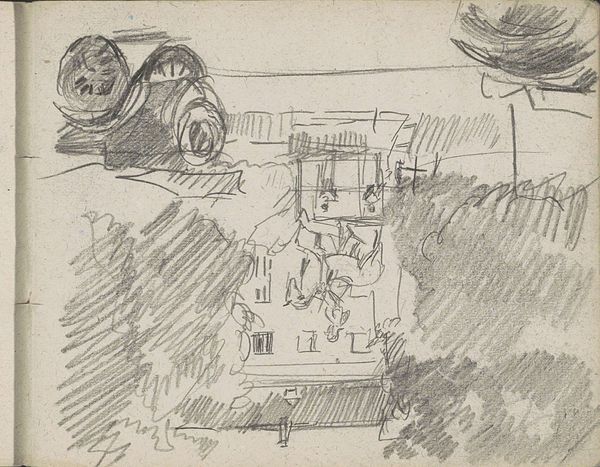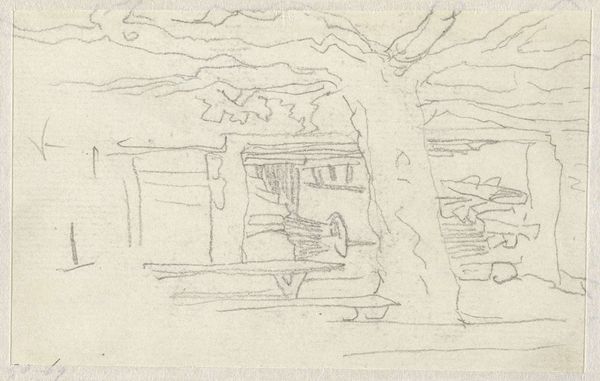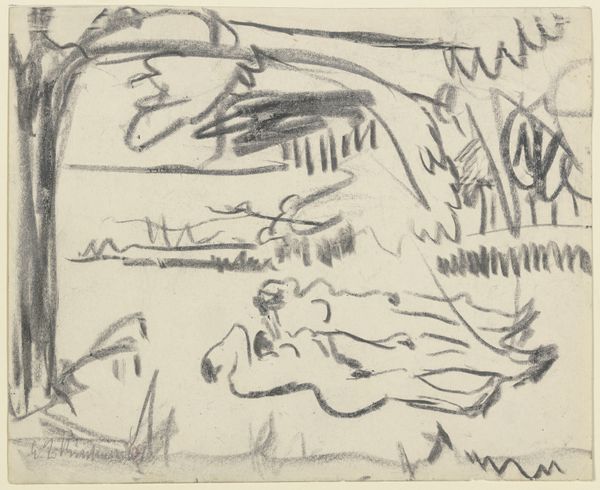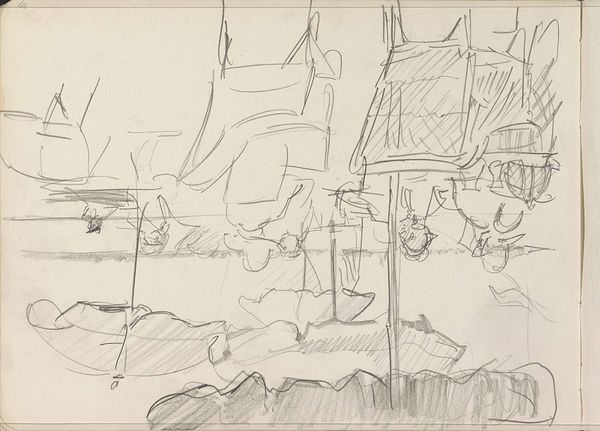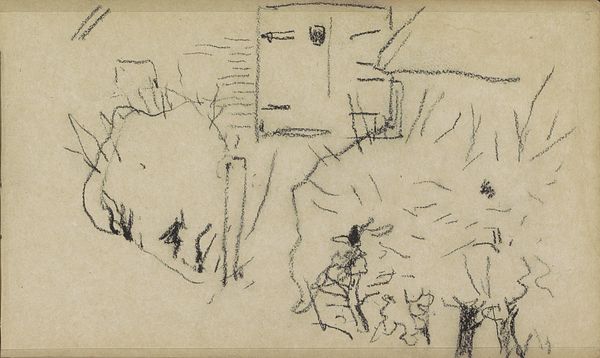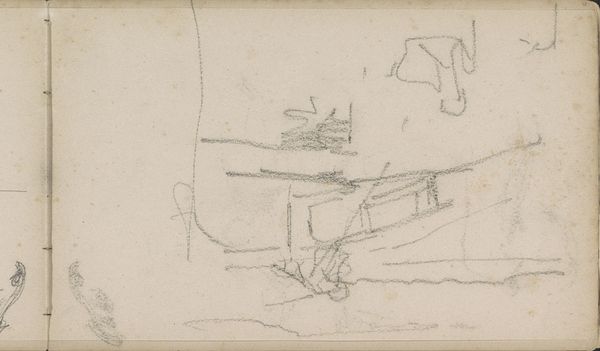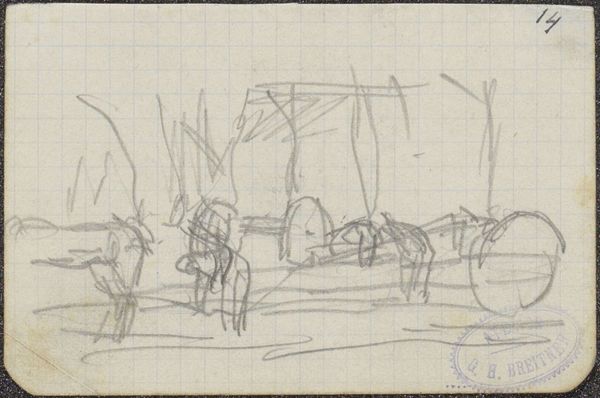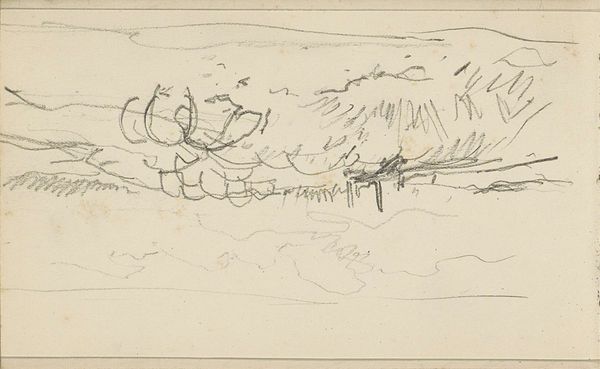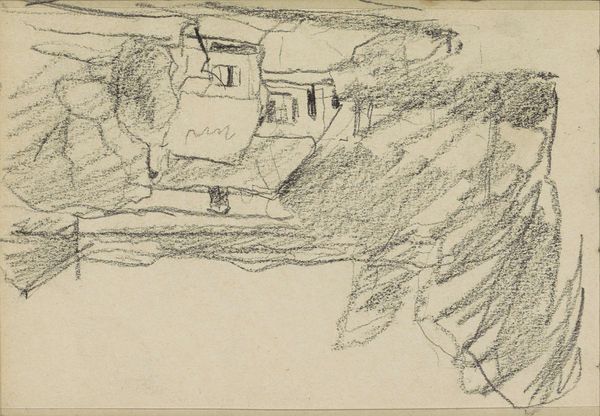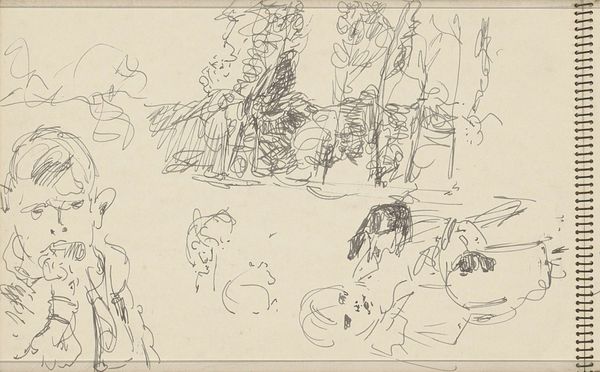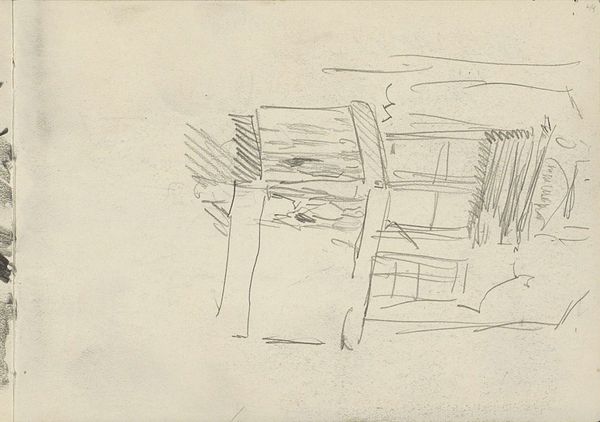
drawing, charcoal
#
drawing
#
landscape
#
german-expressionism
#
geometric
#
expressionism
#
cityscape
#
charcoal
Copyright: Public Domain: Artvee
Curator: Ernst Ludwig Kirchner's charcoal drawing, "Blick auf Davos," circa 1924, offers a striking depiction of a cityscape nestled within a mountainous landscape. Editor: The rawness of the charcoal immediately grabs me. There's a frantic energy to these jagged lines. It feels almost incomplete, yet profoundly expressive. Curator: The choice of charcoal itself speaks volumes. Kirchner, part of the German Expressionist movement, frequently employed such raw materials. Charcoal's accessibility allowed for a direct and unmediated connection between the artist's hand, the subject, and the final image. Editor: Absolutely. Look at the rapid strokes forming the buildings and trees—a series of almost violent jabs on the paper. The geometry is broken and reformed by what looks like simple lines and simple application. Curator: These jagged strokes echo the social anxieties of post-World War I Germany, a period of great economic and political instability, as does the rise of Swiss tourism where Kirchner lived in exile in Davos. The artist himself was grappling with the traumas of his own wartime experiences. Editor: I see that reflected in the composition, or perhaps the lack thereof. The buildings seem precarious, on the verge of collapse. There's very little detail; each of the elements is reduced to their very essence, a simplification of form that lends to that rawness you pointed out earlier. Curator: Consider the setting too. Davos, a mountain resort town, represents both isolation and escape. For Kirchner, who suffered from mental health issues, Davos was a refuge, a place to confront his demons and continue his artistic practice in relative peace, all enabled by Swiss society. Editor: Ultimately, the success lies in the raw, almost unfinished quality. Kirchner presents an unflinching look at his mental landscape while hinting at the political realities he and his surrounding peers faced. It is not comforting but nonetheless beautiful. Curator: Yes, this drawing isn’t merely a depiction of Davos but also evidence of Kirchner’s enduring connection to his materials, allowing us a deeper look into a difficult chapter in both his and the world's history.
Comments
No comments
Be the first to comment and join the conversation on the ultimate creative platform.

